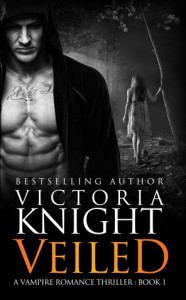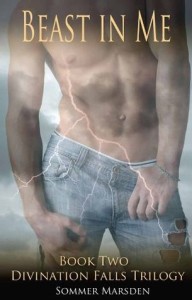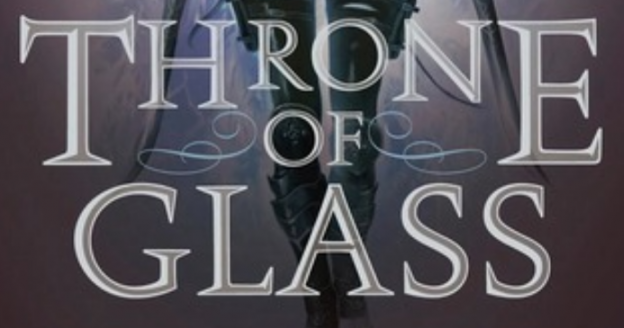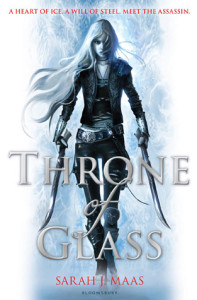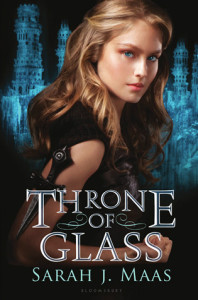A representative of Laudanum House Publishing, contacted me about reading and reviewing Victoria Knight‘s PNR, Veiled. When I agree, they sent me a copy. As far as I know it wasn’t an ARC, though I’d be happy to find out I’m wrong about that.
Description from Goodreads:
Until now Saul relied on the solitude of the forest to hide his true nature from prying eyes. But now a nameless evil has arrived, shaking his world to the foundation. With a trail of death leading right to his doorstep, he must join forces with the most unlikely of allies to save not only his existence, but also the lives of those he holds most dear…
Review:
From time to time, I write a review that turns out to be closer to an essay than any kind of mere critical analysis of a couple hundred page book. This will likely be one of those times.
You see, I don’t always take notes when I read. Usually I can depend on my memory to remember what I want to talk about. However, when I start finding a lot of those kinds of things (good or bad, but honestly usually bad) I start a notes page. It’s not usually a good sign for a book or it’s author…I took a lot of notes while reading this book.
I’ll start, though, by saying that the book does have an interesting premise. And I have to give some serious props to Ms. Knight for creating a heroine who truly wasn’t wimpy or limp-wristed in any manner. She was also a girl who knew what she wanted and went for it. I appreciate this a lot. It’s a little on the rare side and I’m always delighted when I stumble across it.
However, my praise pretty much ends there. To start with, the writing (the actual words chosen, writing) is far too wordy. I know that statement is a little vague, so here’s an example.
Saul was dashing back towards Lester before his better judgement could so much as utter a sound within his head. His rage took the better of him. He didn’t even feel silly running down the street with a bag of groceries in one arm, while intentions of pounding a drunken jerk’s face left him robbed of his good judgement.
Grammatically it’s a passable passage. But there are just too many words in it to allow it to flow smoothly. Over and over this wordiness kept me from really sinking into the story.
Neither was the situation improved by the stiff dialogue that used names far too frequently and felt very staccato; the repetitive use of certain words or phrases, ‘primal’ and ‘he could tell’ come immediately to mind; the giant info-dump at about 25%; or the odd chapter headings.
I don’t usually pay any attention to chapter numberings, but at some point I noticed that I was reading what I thought must be a Chapter 2 for the fourth time. I don’t know. I think each chapter had numerical sections, but it’s never explained so I was just basically confused at all times about it. That’s definitely not standard.
Even these things I probably would have looked over. But the ever-increasing list of contradictions was another matter entirely. Here are a few examples. Saul unlocks a door and when he relocks it, the reader is told it’s the first time the door has been locked in over 100 years. Saul says that he is 106 years old, but also that they (presumably he and his family) lived in Romania for 200 years. Jason’s father is said to have died 5 years earlier of a heart attack and then shows up. Kara gets out of the bathtub and goes to bed, only to be back in the bathtub in the next scene. (At least she’s consistent in liking a drink after her soak though–a beer the first time around and a glass on white wine the second.)
At another point, she shot at someone and is certain she hit them twice, a second person confirms a third hit too. Then later it’s referred to as she hit him once and the second person confirmed a second shot. The numbers aren’t adding up. Later still, she is sitting with a steaming cup of coffee only to get up to go get a bitter cup of coffee. That’s a lot of times for a reader to stop and scratch their head in confusion.
The book was also repetitive, but didn’t always quite line up with itself. For example, we’re told more than once about vampire physiology. At one point, we’re told they can stay out direct sunlight, but after a full day it would alter their DNA (or some such). Then in another passage we’re told much the same information except the vampires will get sick after an hour or so.
Typos, missed words and the occasional homophone can slip through even the most thorough editing regime. I understand that. But these sorts of inconsistencies (especially so many of them) are a fairly clear indication that the book simply wasn’t read and reread often enough or by enough people before going to press. I find this far more unforgivable, further, I’m as inclined to blame the publisher for this as the author.
There were also some basic ‘but, huh?’ kind of questions. For example, Saul can smell Nikki in a car as she pulls into the driveway (it’s long enough to just see the road at the end from the house). The baddie can smell Saul all throughout the woods and smell sex from outside the cabin. So, how come Saul never smelled that baddie who’s been lurking around his land for days?
Then there were the drastic and basically unfollowable leaps of logic. For example, Nikki sees a 20 year old, grainy black and white newspaper article that has a man that looks like Saul in it. Her first thought isn’t that there may be an older relative (brother, cousin, etc) but that it’s Saul and he hasn’t aged. Who thinks that FIRST?
Besides, she’d only ever seen him twice before. Once when she passed him in a grocery story months earlier (and she didn’t even know who he was until later) and then she’d recently caught a glimpse of him in a passing car window. It’s not like she’s intimately familiar with his appearance to start with.
There is also no real world-building or character development. Everything and everyone is fairly unidimensional. As an example, Saul is easily able to walk around with a human face, only transforming to his frightening vampire appearance when fighting. But the baddie (who presumably also could remain in human guise, no reason is given that he couldn’t) never did. He spent all of his time wearing the transformed face of a monster…you know, so he’s easily identifiable as evil. He had no other character traits.
What made the matter worse was that the characters really needed some backstory and depth. None of Saul’s years were felt by the reader. He could have been any other man in his mid-thirties. Nikki, even more, she seemed to possess no fear. Seriously, she seemed to lack any sort of instinct for self-preservation and this oddity is never explained. Yeah, there’s a little hint that she’s supposed to have had a bit of a tragic past, but it doesn’t really explain her complete disregard for her own personal safety.
I really needed to know what made her that way, because lacking any explanatory information, I just have to assume she’s too dense to know better. And a lack of willingness or ability to keep oneself alive is my number one qualification for Too Stupid To Live. Plus, it’s 100% unbelievable in a character. Seeing her waltz into Saul’s home and basically offer herself up was laughably…just wrong basically.
I especially needed this character depth in the face of the fact that she’s a rebellious 19-year-old. 19! (Though, whom she and all her cliché piercing are rebelling against is a mystery, since her mom is dead and her dad is locked up for offences unrevealed.)
The story would have been far more believable if Nikki was older. At 19 she barely scrapes by as a YA heroine, but there is too much sex for this to be a YA or even an NA book. So I ask, why is she 19 or why is all the sex there? It didn’t contribute anything to the story. She’s also very forward and experienced for an unpopular 19-year-old, with just the one friend, who she’s pointedly not attracted to. All-in-all, I was left feeling that the genre was muddled and the book could have done with either choosing to go YA to match its heroine or ageing it’s heroine to match it’s parental advisory rating.
Honestly, I could go on. I could get into the nitty-gritty of little things like “only a few minutes after Nikki left Saul finally got out of bed.” Well, if it’s only been a few minutes it doesn’t rise to a finally type scenarios, now does it? But I won’t. I think I’ve made my points. This could have been a good read, but it just wasn’t. And I really hate having to say that kind of thing.

